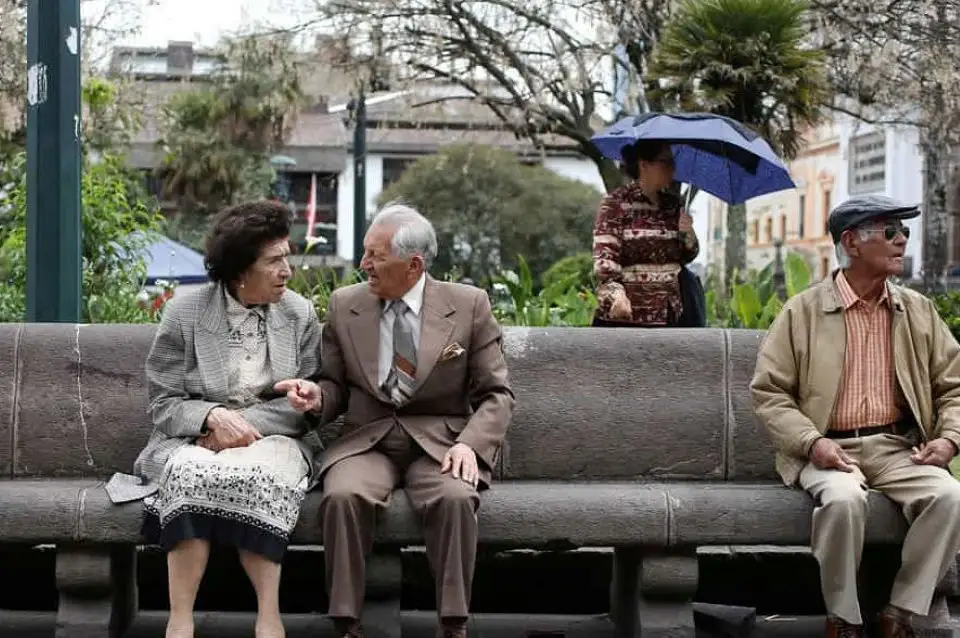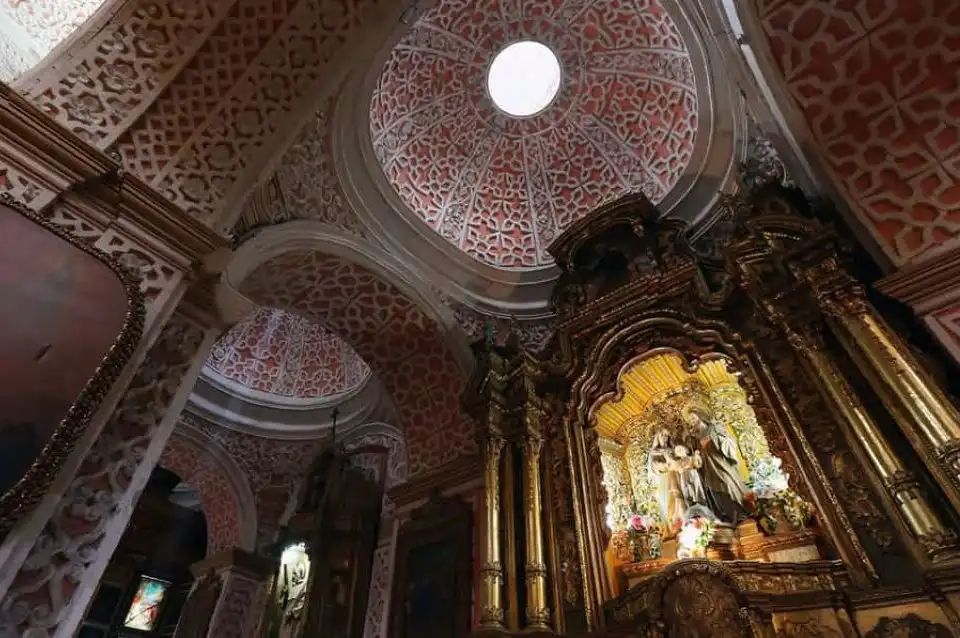The Seven Crosses, prominently located across the square and down Calle Sucre from Casa Gangotena, lead one into Calle García Moreno. This thoroughfare is as renowned for its piety as it is for its historical significance. Not just adorned with churches, Calle García Moreno also features a total of seven giant outdoor stone crosses, symbolizing a fervent effort towards Evangelization. We invite you to join us on a tour to explore the Seven Crosses.
This distinctive arrangement underlines the street’s historical importance, believed to connect the sacred pre-Incan hills of Yavirac and Huanacauri, which are known today as the Panecillo and San Juan hills. These hills were central to the pagan society that once flourished in this area. The presence of the Seven Crosses offers an excellent opportunity to delve into the “layered history” of Quito, tracing back its spiritual and cultural evolution over centuries.
The Seven Crosses
Calle de las Siete Cruces, which means Street of the Seven Crosses, officially García Moreno, after the infamous early 20th century President brutally murdered on its sidewalks, is now home to an astonishing number of visitor sites, including the Museo de la Ciudad, the Carmen Alto Monastery, the Presidential Palace and Plaza Grande, the Numismatic Museum at the Ecuadorian Central Bank building, early 20th-century aristocrat María Augusta Urrutia’s residence (for a taste of upper class Quito), La Compañía Church, the Cathedral, even a colonial home where, as a sign once read, “Bolívar danced”.
You can walk up and down the emblematic street or head west up Sucre to San Francisco Plaza. But our journey, today, takes us north and west.
If “layered history” actually had a home, it would probably be the Metropolitan Cultural Center (on the southwestern corner of Plaza Grande). In this building, where the municipal library and Alberto Caamaño wax museum currently complement the arts-and-culture agenda of the center, everything from a tobacco factory, a jail, an ammunitions arsenal, several schools and universities, a place where dissidents were executed, and Quito’s city hall have all operated.

It was initially a Jesuit stronghold that included everything from a pharmacy, community market and the Order’s prime academic institutions. Its San Gregorio Magno Library – one of the most complete in the Americas at the time – would also become the headquarters of Quito’s first newspaper. The so-christened Primicias de Quito, one of Eugenio Espejo’s many groundbreaking contributions to Ecuadorian society, was short lived, but served to sow seeds in the minds of an inquisitive few.
Across the street, El Sagrario boasts beautiful ceiling frescoes and openwork over turquoise walls. On the northwest corner of Plaza Grande, La Concepción Church was the very first women’s cloister in Quito (best to visit on February 2 during the Candelaria festivities, over Easter and during the special mass on December 24th at 11 PM). We then recommend a detour up Calle Chile to wonderful La Merced. The dapper, almost mini-malistic exterior of this church prove to be the perfect antithesis of what’s inside. “Wedding cake” is perhaps the best word association I can come up with to describe it: a pink-and-white intertwining of figures and spirals, with neon-lit Jesus enclaves and vivid oil paintings with enormous gold frames… too much, it’s just perfect! North on Cuenca, the following corner houses the Museo de Arte Colonial, an overwhelming religious art extravaganza, for those who just can’t get enough.
A block north, turn right down Olmedo to Casa de Benalcázar, a small but interesting colonial art collection, housed in an unforgettable Spanish courtyard mansion (one of the oldest in the capital), across the street from an open space with a statue of a glaring conquistador, which was actually the city’s founding square.
Two blocks downhill on Olmedo, at Venezuela, the spectacular carvings of the El Carmen Bajo church doors will surely have you peeking through the cracks. Turn north on Venezuela to the Camilo Egas Museum. Set, again, in a beautiful courtyard mansion and home to the astoundingly diverse artwork of one of Ecuador’s most talented and imaginative individuals.
Ascending breathlessly from here, La Basílica del Voto Nacional —the biggest thing in the city— towers over the landscape. Somewhat out of place, yet impressive from all angles, this neo-Gothic rarity built only a century ago (and still not complete), with its bizarre gargoyles inspired in Ecuadorian wildlife and exceptional viewpoint from which to admire the city, are worth the slog uphill.
The Seven Crosses made of volcanic rock from Mount Pichincha:
- Hospicio San Lázaro / Hospice
- Carmen Alto
- La Compañía
- Sagrario
- Catedral / Cathedral
- La Concepción
- Santa Bárbara
Images by Ñan Magazine and Quito Turismo.




